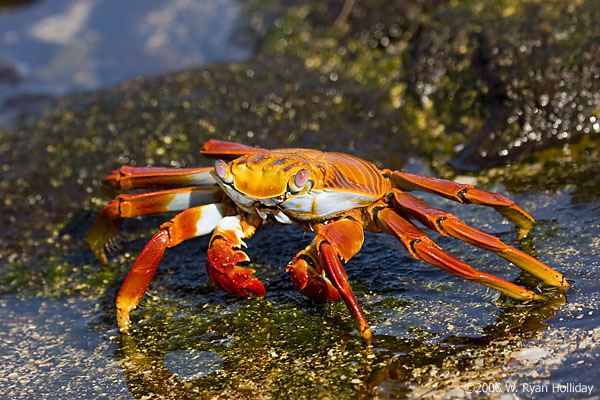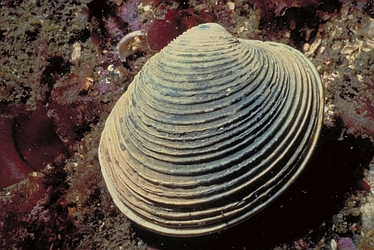-Dichotomous Key-
1)annelida-10b
2)arthropoda-9b
3)mollusca-11a
4)platyhelminthes-9a
5)echinodermata-10a
6)nematoda-11b
7)cnidaria-8b
8)porifera-8a
-Matching-
1.g
2.e
3.c
4.d
5.a
6.f
7.h
8.b
Tuesday, March 20, 2007
Matching
____1.Invertebrates with radial symmetry that evolved from animals with bilateral symmetry.
____2. Invertebrates with radial symmetry and no true circulatory system.
____3. Invertibrates with exoskeletons
____4. Segmented worms
____5.Flatworms
____6. Roundworms
____7. Invertebrates with shells, generally aquatic.
____8.Simplest adn oldest of all invertebrates
a. platyhelminthes
b. porifera
c. arthropoda
d. annelida
e. cnidaria
f. nematoda
g. echinodermata
h.mollusca
____2. Invertebrates with radial symmetry and no true circulatory system.
____3. Invertibrates with exoskeletons
____4. Segmented worms
____5.Flatworms
____6. Roundworms
____7. Invertebrates with shells, generally aquatic.
____8.Simplest adn oldest of all invertebrates
a. platyhelminthes
b. porifera
c. arthropoda
d. annelida
e. cnidaria
f. nematoda
g. echinodermata
h.mollusca
Dichotomous Key
1) a. has symmetry -go to- 2
b. no symmetry -go to- 8
2) a. radial symmetry -go to- 3
b. bilateral symmetry -go to- 4
3) a.have no true skeleton -go to- 8
b.ahve mesodermal endoskeleton -go to-10
4) a. segmented -go to- 5
b. unsegmented -go to- 6
5) a. exoskeleton -go to- 9
b. lack of hard skeleton -go to-10
6) a. has a shellor beak -go to-11
b. lack of shell or beak -go-to- 7
7) a. one body opening -go-to- 9
b. two body openings -go-to-11
8) a. Porifera
b. Cnidaria
9) a. Platyhelminthes
b. Arthropoda
10) a.Echinodermata
b. Annelida
11) a.Mollusca
b. Nematoda
b. no symmetry -go to- 8
2) a. radial symmetry -go to- 3
b. bilateral symmetry -go to- 4
3) a.have no true skeleton -go to- 8
b.ahve mesodermal endoskeleton -go to-10
4) a. segmented -go to- 5
b. unsegmented -go to- 6
5) a. exoskeleton -go to- 9
b. lack of hard skeleton -go to-10
6) a. has a shellor beak -go to-11
b. lack of shell or beak -go-to- 7
7) a. one body opening -go-to- 9
b. two body openings -go-to-11
8) a. Porifera
b. Cnidaria
9) a. Platyhelminthes
b. Arthropoda
10) a.Echinodermata
b. Annelida
11) a.Mollusca
b. Nematoda
Sunday, March 18, 2007
Introduction to Invertibrates
Invertebrates, or animals without a backbone, make up over 95% of all animals on earth. They range from creatures that make their home in the deep blue sea, like sea anemones and jellyfish, to more shallow water organisms such as coral. Other invertebrates can walk on land such as spiders and crabs, and yet others can fly like butterflies, dragonflies, and bees. Invertebrates also range from very simple organisms, such as worms, sponges, and starfish, to very complex organisms such as octopodes.
================================
++++++++++++++++++++++++++++++++
================================
 crab
crab
 caterpillar
caterpillar
 jellyfish
jellyfish
 snail
snail
 spider
spider
 worm
worm
 fly
fly
 bee
bee
 sand dollar
sand dollar
 dragonfly
dragonfly

oyster
 sea cucumber
sea cucumber
 coral
coral

clam
 sponge
sponge
 starfish
starfish

shrimp

scorpion

octopus
================================
++++++++++++++++++++++++++++++++
================================
Pictures of some
invertebrates
 crab
crab caterpillar
caterpillar jellyfish
jellyfish snail
snail spider
spider worm
worm fly
fly bee
bee sand dollar
sand dollar dragonfly
dragonfly
oyster
 sea cucumber
sea cucumber coral
coral
clam
 sponge
sponge starfish
starfish
shrimp

scorpion

octopus
Arthropoda
There are many animals in the phylum anthropoda, some of which are crabs, spiders, caterpillars, butterflies, scorpions, and bees; basically insects, spiders and crustaceans (animals that have a hard outer shell and no bones inside them also known as an exo-skeleton.) Two examples of these animals are crabs and beetles. Arthropods have a segmented body with appendages (arms or legs) on each segment. Arthropods have bilateral symmetry, which means that they can be divided one way into two halves that look the same. Like the trapezoid and the scorpion shown below. Arthropods have two body openings, one at their head, one at the other end of their body at the end of the abdomen. Arthropods have a much simpler nervous system than humans, basically they have two nerves that go along the body, and have nerves branching off. The two main nerves fuse in the head to form a brain. Arthropods reproduce with eggs that the female lays and the males fertilize. Arthropods do not have a true circulatory system. They do not have viens or arteries, instead they have an copper based, oxygen carrying protein in their "blood", as opposed to humans who have iorn based hemoglobin to transpoer oxygen. Their "Blood" in pumped by many hearts, into the body cavity where it oxygenates the tissues.
Arthropods breathe in many different ways. Arthropods that live mainly in water have gills specialized for gas exchange in water. Arthropods that are terrestrial, or live on land, have internal surfaces to process oxygen, such as lungs. Some arthropods have an oxygen-absorbing membrane to help them obtain oxygen. Arthropoda is the largest phylum of animals in the animal kingdom.





Arthropods breathe in many different ways. Arthropods that live mainly in water have gills specialized for gas exchange in water. Arthropods that are terrestrial, or live on land, have internal surfaces to process oxygen, such as lungs. Some arthropods have an oxygen-absorbing membrane to help them obtain oxygen. Arthropoda is the largest phylum of animals in the animal kingdom.




Echinodermata
 The phylum Echinodermata includes animals such as starfish, sea cucumbers, sea urchans, and sand dollars. Ecdhinnoderms are marine animals which means that they live in water. Echinoderms evolved from animals with bilateral symmetry into marine animals with radial symmetry.
The phylum Echinodermata includes animals such as starfish, sea cucumbers, sea urchans, and sand dollars. Ecdhinnoderms are marine animals which means that they live in water. Echinoderms evolved from animals with bilateral symmetry into marine animals with radial symmetry.All echinoderms have fivefold radial symmetry
at one piont in their life. They also have an endoskeleton, inner
support system, which most invertibrates do not have.
Echinoderms have one body opening that serves as both a
opening that serves as both a
Echinoderms have one body
 opening that serves as both a
opening that serves as both a mouth and anus.They have a radial nervous system,which is basically a "net"or "web" of nerves centralized around the body opening and branches our into the appendages. Echinoderms don't have a brain. Echinoderms reproduce sexually with external fertlization, they do this by releasing sperm and egg into the water and the eggs get fertilized. Some echinoderms have the ability to regenerate limbs, in the case of the starfish, it can regenerate it self from one limb so long as there is some of the body of the starfish still attached. Echinoderms have an open circulatory system. There are no blood vessels present, the blood mixes freely with other body fluids and is pumped by a series of hearts. A hydraulic water vascular system aids Echinoderms in movement, circulation and "breathing," or more accurately, gas exchange.
Subscribe to:
Posts (Atom)









